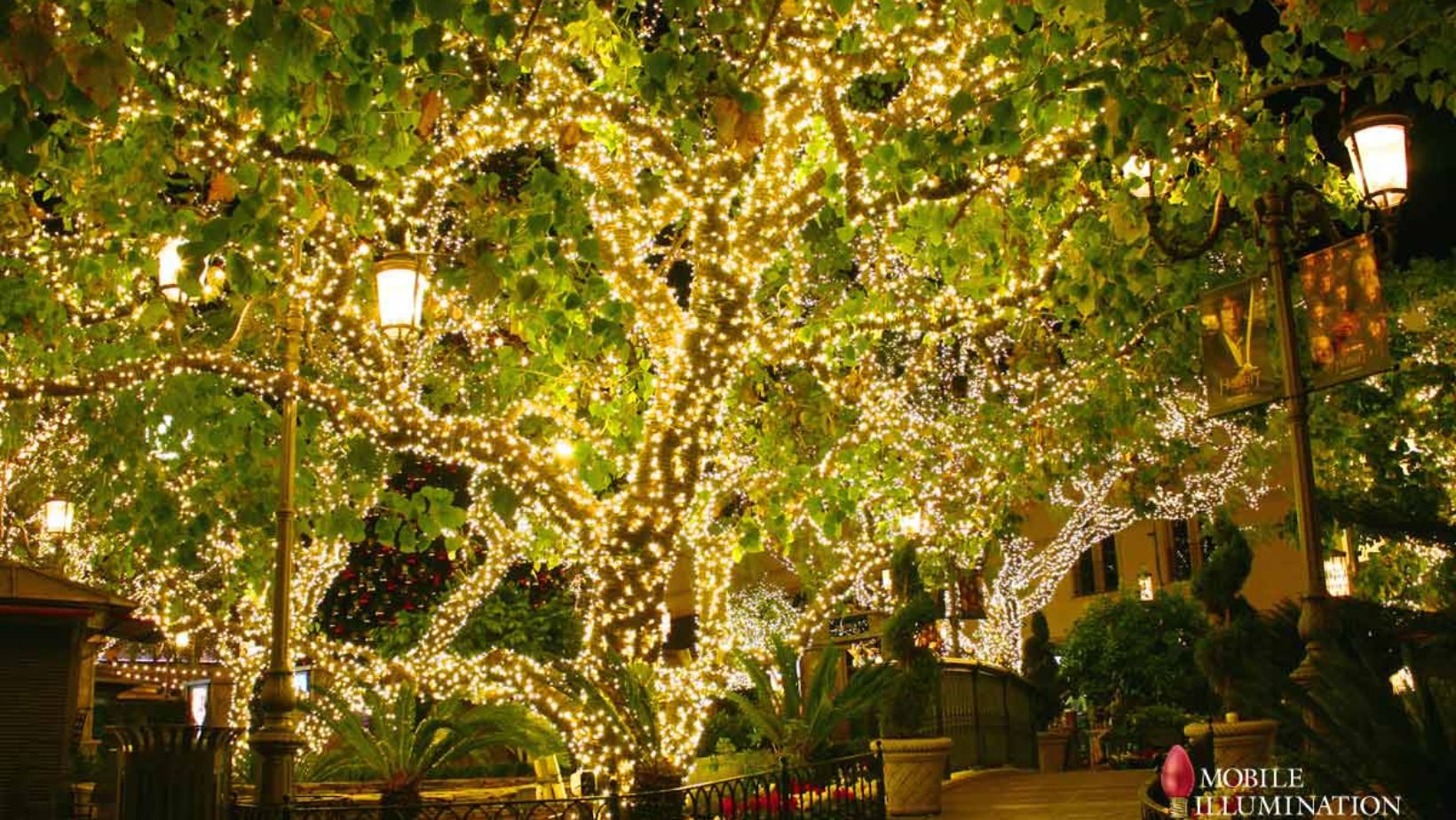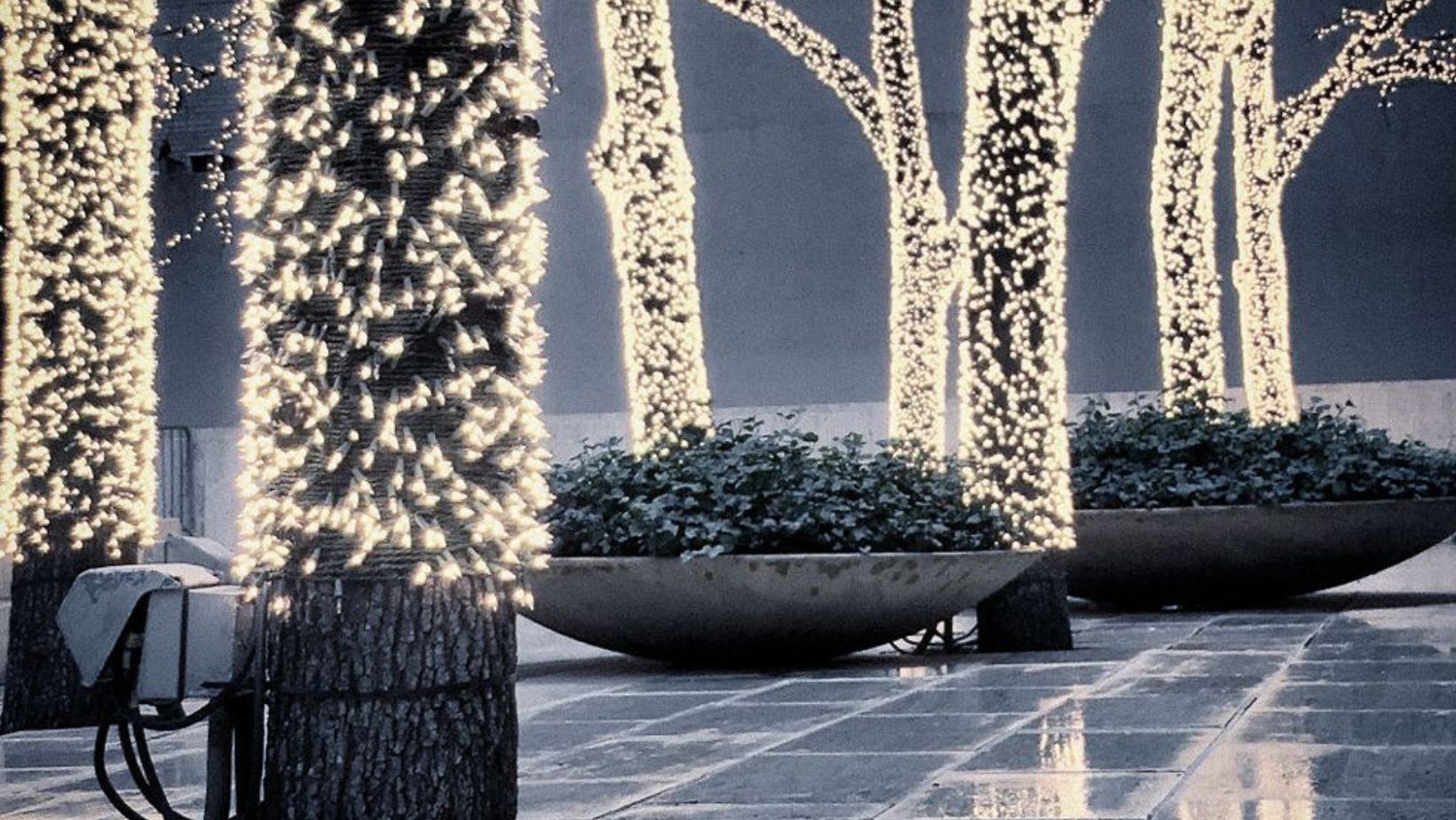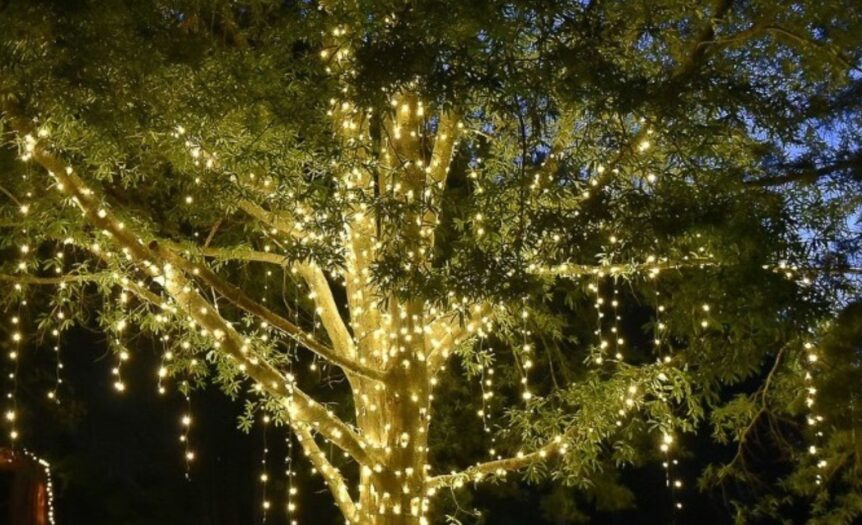The sparkling allure of lights wrapped around trees can transform an ordinary outdoor space into a magical wonderland, especially during festive seasons.
However, achieving that picturesque display with solar uplights for trees requires attention to detail and a mindful approach. Here’s what you need to know about it.
The Do’s
The task of wrapping lights around the trees you have in your garden can be quite difficult or risky. So, before you begin your job, you first need to create a plan. It will help you get a sense of “must-do work” and ensure you are completing the project on time.
Apart from that, there are some other steps that you need to follow in this aspect, too, like —
Plan Ahead
Before you start wrapping lights, create a plan. Assess the number of trees you want to decorate, the type of lights you’ll use, and how you’ll power them. Planning helps avoid unnecessary tangles and ensures a smoother installation process.
Choose the Right Lights
Opt for LED lights—they are energy-efficient and emit less heat than traditional incandescent bulbs. Additionally, select lights are rated for outdoor use with weather-resistant materials to withstand varying climatic conditions.
Measure and Test
Measure the circumference and height of the tree to estimate the number of lights required. Before installation, test the lights to ensure they function correctly and identify any defective bulbs that need replacing.
Start from the Base
Begin wrapping the lights at the base of the tree trunk and securing the lights with twist ties or light clips. Ensure the first few loops are tightly wound to prevent slippage and provide a sturdy foundation for the rest of the wrapping.
Work Methodically
Take a systematic approach as you wrap the lights around the branches, moving from the trunk outward.

Distribute the lights evenly and maintain consistent spacing between loops to achieve a balanced and aesthetically pleasing look.
Use Extension Cords Safely
If you require extension cords, use only outdoor-rated cords and avoid overloading them with too many light strands. Conceal cords where possible to prevent tripping hazards and protect them from weather elements.
Secure and Protect
Secure the lights firmly, but avoid binding them too tightly around branches, which can cause damage. Use clips or ties specifically designed for outdoor lights to prevent movement and potential damage to the tree’s bark.
Highlight Tree Features
Emphasize the tree’s natural shape and highlights by strategically placing lights along the branches. Focus on accentuating unique features like the canopy or interesting branch formations.
Mindful Power Consumption
Consider using a timer or smart plug to control when the lights are on, reducing energy consumption and extending the lifespan of the bulbs.
Aim to turn off the lights during daylight hours or when unnecessary.
Regular Maintenance
Periodically inspect the lights for damage or issues and promptly replace faulty bulbs or worn-out sections. This maintenance will ensure your display remains vibrant and safe throughout the season.
The Don’ts
So, as we’re done with the “do’s” you need to follow while working on the titular task, let us talk about the don’ts, too. Here’s what it may entail —
Overload Branches
Avoid overburdening branches with excessive lights, which can strain them and cause breakage. Distribute the lights evenly to maintain the tree’s health and aesthetics.
Use Indoor Lights Outdoors
Indoor lights are not built to withstand outdoor weather conditions. Always opt for lights explicitly labeled for outdoor use to prevent hazards and ensure longevity.
Neglect Safety Measures
Prioritize safety by avoiding makeshift installations or using damaged cords or lights. Steer clear of contact with power lines and be cautious when working with electricity.
Ignore Tree Growth
Account for tree growth when installing lights. Avoid wrapping the lights too tightly, as it can restrict the tree’s growth and cause damage over time.
Leave Lights Up Indefinitely
Resist the temptation to keep lights up year-round. Prolonged exposure can damage both the lights and the tree. Remove the lights promptly after the festive season.
Neglect Neighbors
Be considerate of your neighbors when choosing the intensity and duration of your light display.

Avoid excessive brightness or flashing lights that might cause a disturbance.
Rush the Process
Take your time during installation to ensure a neat and well-distributed display. Rushing might lead to tangled lights, uneven wrapping, or potential damage to the tree.
Disregard Environmental Impact
Dispose of old or non-functioning lights responsibly by recycling them. Mindful disposal minimizes environmental impact and promotes sustainability.
FAQs – Frequently Asked Questions
1: Do solar lights work in cloudy or rainy weather?
Solar lights can still function in cloudy or rainy conditions, although they may not charge as efficiently. Some advanced models have larger batteries to store more energy for such conditions. However, they might be a little more expensive than usual.
2: How do I maintain solar lights?
Regular maintenance usually involves cleaning the solar panels to ensure maximum sunlight absorption. Additionally, check and replace batteries when needed.
3: Can solar lights be used indoors?
Solar lights are primarily designed for outdoor use to harness sunlight for charging. However, there are indoor solar lighting options available, though they may require additional setup for sunlight exposure.
4: Do solar lights have sensors for automatic operation?
Many solar lights come equipped with sensors, such as motion sensors or light sensors, enabling automatic activation at dusk or when motion is detected, conserving energy.
5: Are solar lights weather-resistant?
Most solar lights are designed to be weather-resistant or waterproof, making them suitable for outdoor use in various weather conditions.
However, extreme conditions might affect their performance over time.
The Bottom Line
Wrapping lights around trees can bring joy and warmth to any outdoor space. By following these do’s and don’ts, you can create a stunning display while preserving the health of your trees and ensuring a safe and enjoyable experience for all.








